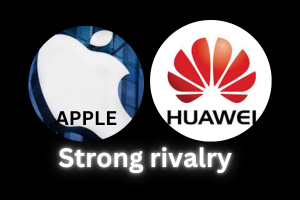The Chinese tech giant Huawei began selling two versions of its much awaited high-end Pura 70 smartphone series on Thursday. According to several observers, both models would likely come with a sophisticated chip developed in China, similar to what the Mate 60 smartphone has.
The Mate series places more of an emphasis on performance and business functions, while the Pura series, created by the Shenzhen-headquartered startup, has cutting-edge cameras and a stylish appearance.
Given that the Mate 60 series smartphones are equipped with a cutting-edge chip manufactured in China that some analysts believe is only a few generations behind the chips used by Apple and Google, two of the biggest tech companies in the West, Chinese state media hailed the launch of Huawei’s Mate 60 series last year as a victory over US sanctions against the company.
Acting Chairman Eric Xu of Huawei stated at a Shenzhen forum that the company also intends to release the Mate 70 smartphone this year.
On Thursday, April 18, the Pro and Ultra versions of the Pura 70 were made available; on April 22, the Plus and base models will go on sale. Within minutes of the start of sales, the phones were sold out at Huawei’s official website, while hundreds of ardent supporters of the brand waited in line at Huawei outlets in Beijing, Shanghai, and Shenzhen.
Lucas Zhuang, one of the customers, claimed that the Pura 70’s network speed was 5G-level. Although Washington has banned China from receiving 5G chip licenses, Huawei’s Mate 60 phones were frequently already capable of reaching 5G speed even though Huawei did not label them as such.
“We didn’t know what chip the Pura 70 has inside. We’ll only find out after buying it,” Zhuang, who already had the Mate 60, told Reuters, after standing in line at Huawei’s flagship store in Shanghai.
“But we believe the chip it has will certainly meet people’s needs.”
Senior analyst Ivan Lam of research firm Counterpoint said that Huawei will ship roughly 60 million handsets this year, with the Pura 70 series serving as a major driver. Huawei sold roughly 32 million handsets in the previous year.
“There may be some shortage at various channels but supply will be much better compared to when the Mate 60 was launched. We don’t expect any long-lasting shortage” he stated.
There are four different models in the Pura 70 series: the 70, the 70 Plus, the 70 Pro, and the 70 Ultra. The Pura 70 series is available for 5,499 yuan ($760.06) as its starting price.
Huawei’s smartphone sales surged in August after the Mate 60 Pro’s release. Counterpoint reports that Huawei’s unit sales increased by 64% year over year in the first half of 2024. During the same time frame, Apple’s iPhone sales in China decreased by 24%.
China’s Semiconductor Manufacturing International Corporation (SMIC) (0981.HK) is purportedly the manufacturer of Huawei’s Kirin 9000S chip, opens new tab despite U.S. export restrictions aimed at limiting Beijing’s chip-making capabilities.
Thousands of Huawei fans watched as numerous online reviewers livestreamed their dismantling of the Pura 70 over Chinese social media as soon as it was released. Reviewers claim that the smartphone has the Kirin 9010 chip, which seems to be slightly better compared to the Kirin 9000s seen in the Mate 60 Pro.
A few reviewers also mentioned that the Mate 60 heated up faster than the phone.
Huawei’s latest chips were viewed as an indication of China’s technical comeback, even in the face of Washington’s persistent attempts to undermine its ability to manufacture cutting-edge semiconductors.
The Biden administration started looking into the chip early this year and stated last month that it was still investigating the possibility that SMIC had broken American export laws.
In addition to focusing on China’s chip producers, the United States has placed trade restrictions on Huawei since 2018. The business disputes this claim, but the government regards Huawei and its products as a threat to national security.
Speaking about the upcoming Mate 70 smartphones on Tuesday, Xu stated that the intention is for them to run a “pure” version of HarmonyOS, which was created in 2019 when sanctions from the United States prevented Huawei from using American technology like Google’s Android.
In order to become autonomous and compete with Apple’s iOS and Android, Huawei intends to sever HarmonyOS’s reliance on the Android application ecosystem, he said.







